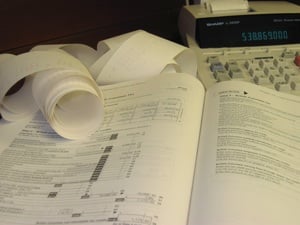IRS says big surge in number of filers who made $200K — but didn't owe Uncle Sam a penny; 'further evidence of how broken this system is'
The number of people who reported incomes of at least $200,000 and paid no U.S. taxes jumped 79.5 percent in 2008 from 2007, according to an Internal Revenue Service study.
In all, 18,783 people filed U.S. tax returns with adjusted gross incomes of at least $200,000 and used legal deductions, exemptions and credits to avoid owing any U.S. income taxes. That represents 0.43 percent of high-income taxpayers, the biggest percentage of non-payers in an IRS study released yesterday that includes data going back to 1977.
Even with the dollar threshold being held constant for inflation, the 2008 totals and percentages were the highest on record. The percentage of non-payers in 2008 almost doubled from the 0.23 percent of filers who reported no income tax liability in 2007, before a recession-fueled decline in tax revenue.
“That is further evidence of how broken this system is,” said Senator Ron Wyden, an Oregon Democrat who has called for an overhaul of the U.S. tax code. “What else can you say but ‘Congress, get going and fix this'?”
The data are estimates based on sampling conducted by the IRS and are subject to sampling error. The numbers vary depending on the measure of income and the measure of tax the IRS uses.
No Tax Owed
Under an “expanded income” concept that adds items such as tax-exempt municipal bond interest not included in adjusted gross income, 27,399 people had annual incomes of $200,000 or more in 2008 without paying any U.S. taxes. Using the AGI definition and an analysis that examines taxes paid worldwide, 10,824 returns in the high-income group owed no tax. Both of those figures, on an absolute and a percentage basis, were records in the years covered by the study.
“It's kind of a surprise to me. I don't know what the reason for that would be,” said Alan Viard, an economist at the American Enterprise Institute, a Washington policy research group that supports low taxes and market-driven policies.
The reasons why high earners can legally pay no taxes include partnership losses, deductions for charitable contributions, medical expenses and investment interest expenses, the report said. Typically, people in this group avoid taxes because of a combination of deductions and other provisions and income sources that differ from those of the typical taxpayer.
“Nontaxable returns under the expanded income concept were much more likely to have tax-exempt interest than were taxable returns, and, when they did have it, the average amount was much higher,” said the study by IRS economist Justin Bryan. “Similarly, nontaxable returns were much less likely to have any income from salaries and wages.”
Alternative Minimum Tax
These taxpayers are able to avoid paying the alternative minimum tax, which was created in 1969 following reports that 155 high-income taxpayers had paid no taxes. The AMT was rewritten in 1986 and operates as a parallel tax system with a structure that tends to affect people with high state and local taxes or with large families. Many tax deductions, including those for charitable contributions, can be applied to the regular income tax and to the AMT.
Nearly half of U.S. households don't pay any federal income taxes. Most of the non-payers are at the lower end of the income scale, where tax credits intended to encourage work and cover the costs of raising children help to eliminate tax liability.
About 3.1 percent of taxpayers reported adjusted gross income of at least $200,000 in 2008. They reported earning 29.8 percent of the AGI of all taxpayers and paying 52 percent of all federal individual income taxes, according to IRS data.
Numbers Dropped
Eric Toder, co-director of the Washington-based Tax Policy Center, a joint project of the Urban Institute and the Brookings Institution that provides research and analysis on tax policies, said the number of filers earning more than $200,000 dropped from 2007, suggesting that there were dips in income even for people who managed to exceed that income level. That trend and the effect of the recession could have pushed people who would otherwise have had some tax liabilities into the no-tax category.
IRS figures show that the number of filers earning more than $200,000 dipped from 4.53 million in 2007 to 4.37 million in 2008.
“My guess is that the average income in that group went down quite a bit,” Toder said.







